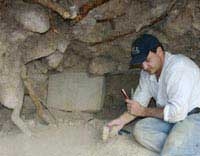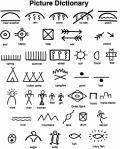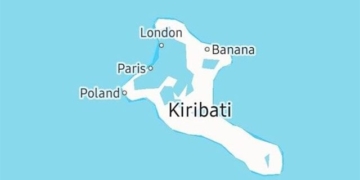A research team led by the Perelman School of Medicine at the University of Pennsylvania (USA) has discovered that up to two forms of “hybrid humans” Homo sapiens – Neanderthals are currently existing in the world.
According to the most supported theories, hybrids between our species, Homo sapiens, and ancient Neanderthals appeared only 40,000-50,000 years ago, following the migration of Homo sapiens out of Africa 60,000-75,000 years ago, and just before the extinction of the Neanderthals.
Neanderthals, primarily distributed in Europe but also with some groups residing in Asia, are a different species belonging to the genus Homo, sharing lineage with Homo sapiens, also known as “modern humans”, which is us.
They were considered purebred until interbreeding with Homo sapiens in Europe and Asia occurred. However, new research confirms that this is not accurate.

Did Neanderthals and Homo sapiens interbreed as far back as 250,000 years ago? – (Graphic: ANCIENT ORIGINS)
The study recently published in the journal Current Biology reveals that DNA from modern humans had existed in the bloodline of Neanderthals prior to this.
“We found evidence of ancient mating activities, where genes transferred from ancient Homo sapiens to Neanderthals” – said co-author Alexander Platt from the Perelman School of Medicine, as reported by Ancient Origins.
The group of Neanderthals that hybridized with modern humans left Africa about 250,000-270,000 years ago, appearing more similar to Homo sapiens than to Neanderthals, despite their primary ancestry being Neanderthal.
It is estimated that they carried 6% of the genes from our Homo sapiens ancestors, genes that have been obscured throughout evolutionary history.
However, the outcome may have been quite tragic. It seems these hybrid humans did not survive during that ancient migration. No remains of them have been found on the Eurasian continent.
The clues that helped researchers from the USA and Africa identify them are the sequencing of the genomes of modern individuals living in the sub-Saharan Africa region.
Africans are believed to be the only group of “purebred” Homo sapiens; whereas all individuals originating outside Africa carry Neanderthal hybrid blood, with approximately 2% of the genome inherited from other species’ ancestors.
However, the authors found astonishing Neanderthal elements in the genomes of these African individuals, from 12 different populations residing in Ethiopia, Tanzania, Botswana, and Cameroon. Of course, the Neanderthal gene ratio is much lower than that of the group that left Africa, as it has been diluted by purebred Homo sapiens over many generations.
Thus, the ancient Neanderthal bloodline – which went extinct over 30,000 years ago – still exists on every continent of Earth in two ways.
First, those living in Asia, Australia, and the Americas are mainly descendants of hybrid humans with predominantly Homo sapiens ancestry, inheriting a small amount of Neanderthal genes through interbreeding tens of thousands of years ago in Europe and Asia.
Second, individuals living in sub-Saharan Africa or who have only recently left there may be descendants of Neanderthals who hybridized with Homo sapiens, having had the advantage of remaining in the cradle of humanity during the migration wave 250,000 years ago.





















































